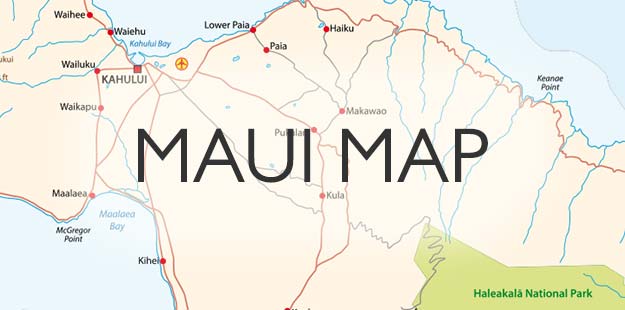How to Bring Your Pet to Hawaii:
A Step-by-Step Guide
Planning to move or travel with your pet to Hawaii? Hawaiʻi is a rabies-free state, and to maintain that status, there are strict regulations for bringing cats and dogs from the mainland. To make the process smooth for both you and your pet, here’s everything you need to know, from vaccination requirements to quarantine options. To bring your pet to Hawaii, follow these steps.

Did you know some resorts in Hawaii, like Fairmont Kea Lani, are pet-friendly? Though you can’t take them down by the pool and are restricted on where these pets can roam, it’s possible. But before getting all excited about bringing Gizmo or Rufus to Maui, it’s harder and takes longer than you might think. Here are some considerations to take into account if you bring your pet to Hawaii.

Step 1: Rabies Vaccination Requirements
Since Hawaii is rabies-free, all pets entering the state must meet specific rabies vaccination guidelines. Here’s what you need to do:
- Two Rabies Vaccinations: Your pet must have received at least two rabies vaccinations in their lifetime, with the doses spaced at least 30 days apart.
- Timing of Last Vaccination: The most recent vaccination should be given at least 30 days before arrival in Hawaiʻi but no more than 12 months prior (for the one-year vaccine) or 36 months prior (for the three-year vaccine).
Keep detailed vaccination records, as these will be required later in the process.
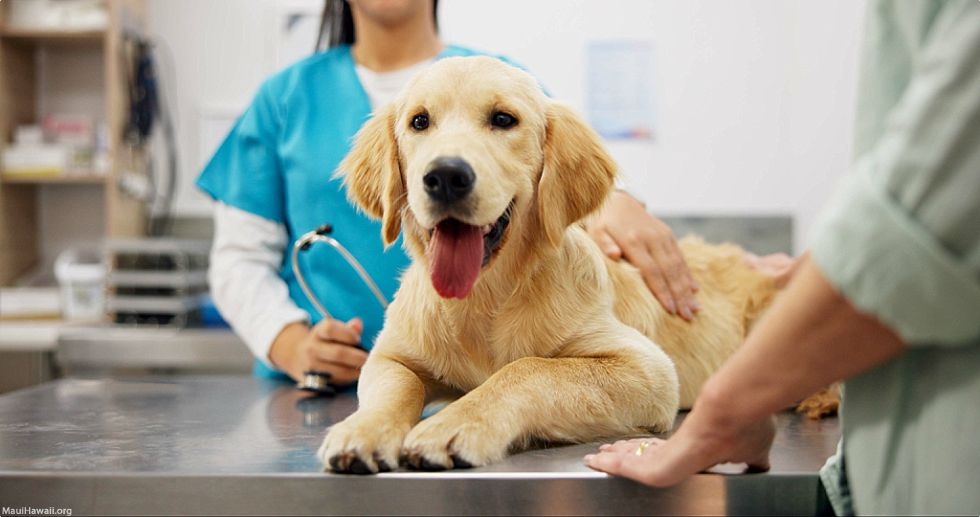
Step 2: Microchip Implantation
Before completing the rabies blood test, your pet must have a microchip implanted. The microchip will serve as a permanent form of identification for your pet during the quarantine and inspection process. Be sure to keep the microchip number on file, as it must match the number provided on the import form.
Step 3: Rabies Antibody Test (FAVN)
The Rabies Antibody Test (FAVN) is essential to prove your pet’s immunity to rabies. To complete this step:
- A veterinarian must collect a blood sample for the FAVN test.
- The sample must be sent to an approved laboratory, such as the Kansas State University Rabies Laboratory or the DOD Food Analysis and Diagnostic Laboratory.
- The test results must show a sufficient antibody level (at least 0.5 IU/ml).
The FAVN test must be done no sooner than 30 days after your pet’s second rabies vaccination and within 36 months before arriving in Hawaiʻi. Results can sometimes take months to receive, so make sure to allocate extra time for test results to come in. Check here and search by chip number to see if AQS has received your pet’s OIE-FAVN test.
Step 4: Pre-Arrival Waiting Period
Once your pet passes the FAVN test, you’ll need to wait a minimum of 120 days before entering Hawaiʻi to qualify for the Direct Airport Release Program. Use the following checklists to ensure you have completed all of the requirements for bringing your pet to Hawaii.
- Direct Airport Release Program Checklist 1 – Honolulu Arrival
- Direct Airport Release Program Checklist 2 – Kona, Kahului, or Lihue Arrival
This waiting period is crucial to ensure your pet is protected against rabies and avoids lengthy quarantine times.
If you’re in a hurry, there’s also the option for a 5-Day-Or-Less Quarantine, but it still requires a waiting period of at least 30 days after passing the FAVN test.
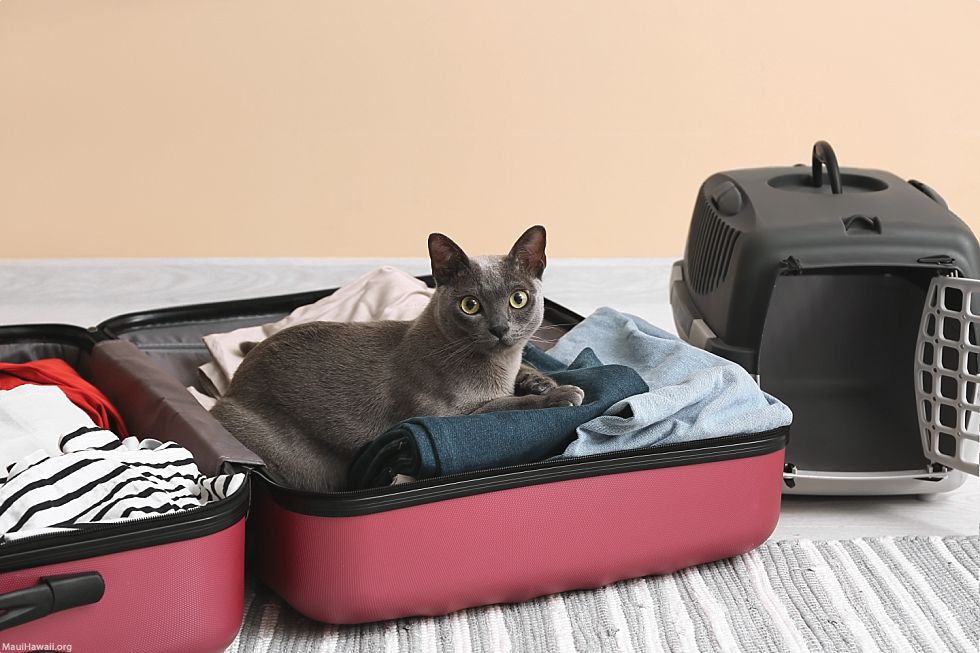
Step 5: Complete the Required Forms and Pay Fees
To bring your pet into Hawaiʻi, you’ll need to complete the Dog & Cat Import Form (AQS-279) and submit all necessary documents, including:
- Microchip number
- Vaccination certificates
- FAVN test results
Make sure to submit the form well in advance of your travel date. The form can be found on the Hawaiʻi Department of Agriculture website: Download AQS-279 Form Here.
Fee Structure:
- Direct Airport Release (DAR) Program: $185 per pet
- 5-Day-Or-Less Quarantine: $244 per pet
- Full 120-Day Quarantine: $1,080 per pet
***Message from the HDOA – “One completed form per pet is required to be submitted along with all pre-arrival documents (Two rabies vaccination certificates, health certificate, pre-payments made payable to: Hawai‘i Department of Agriculture – Cashier check or money order only (No Personal Checks)) NO LESS THAN 10 DAYS BEFORE PET ARRIVES IN HAWAII TO QUALIFY FOR 5 DAY OR LESS or AIRPORT RELEASE. If the health certificate cannot be sent 10 days before arriving with the rest of the documents, the original must be given to the inspector upon arrival in Hawaii.”
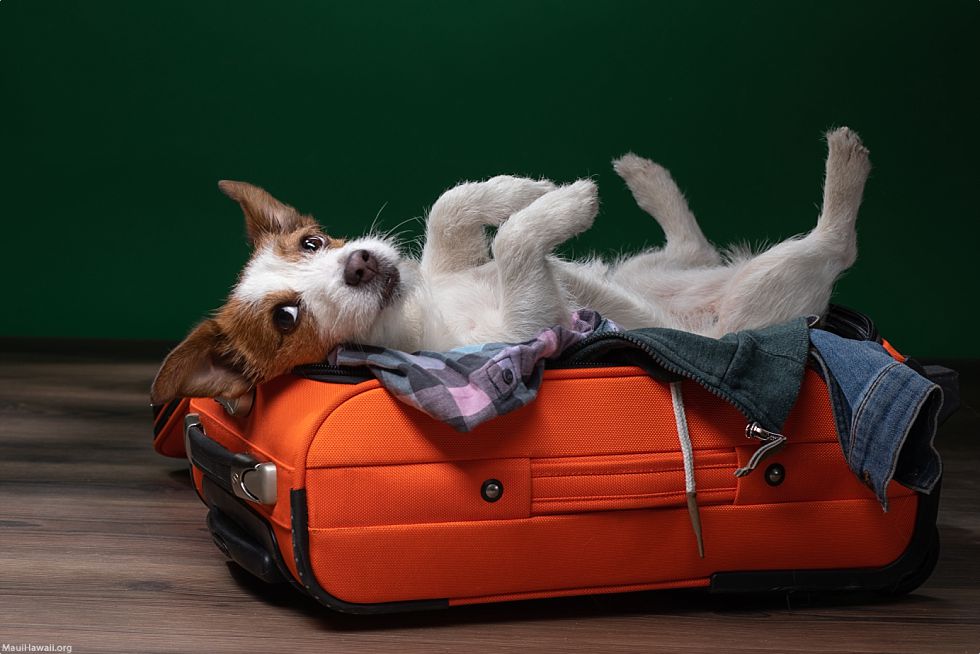
Step 6: Arriving in Hawaiʻi
Before arriving in Hawaii, make sure you have completed all of the requirements in the following checklists:
- Direct Airport Release Program Checklist 1 – Honolulu Arrival
- Direct Airport Release Program Checklist 2 – Kona, Kahului, or Lihue Arrival
Once you arrive, you can expect the following:
- Your pet will be inspected by the Animal Quarantine Station staff. (HNL Animal Quarantine Location Map)
- If all paperwork is in order and your pet passes the health inspection, they may be released directly from the airport under the Direct Airport Release Program.
For pets arriving outside regular business hours or without the proper documentation, quarantine may be required until the necessary checks are completed.

Additional Considerations
- Travel Crates: Make sure your pet is comfortable in their travel crate, as it will be their home during the flight. Airlines have requirements for the size of these crates in relation to the animal. Follow their guidelines, as they will refuse the animal if the crate is not to the airlineʻs specifications.
- Flights: Plan your arrival during normal business hours to avoid delays in pet inspections.
- Quarantine for Unprepared Pets: If any steps are missed or documents are incomplete, your pet could be subject to up to 120 days of quarantine, so ensure all steps are followed carefully.
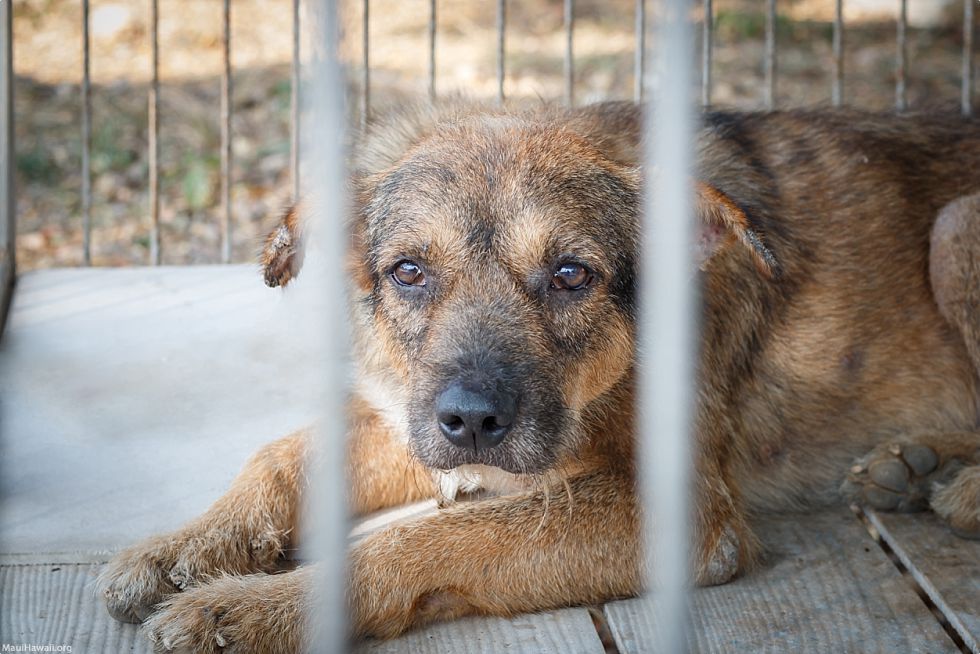
Exemptions from Quarantine
If you’re bringing your pet from a rabies-free area like Australia, New Zealand, Guam, or the United Kingdom, your pet may be exempt from quarantine under Hawaiʻi’s laws.
Weight Restrictions:
Hawaiʻi does not have specific weight restrictions for bringing pets like cats or dogs into the state. However, individual airlines (and accommodations) may have their own weight limits for pets traveling in the cabin or cargo, so it’s important to check with the airline you’re flying with regarding their pet policies.
For example, many airlines allow small pets to travel in the cabin if they fit in an airline-approved carrier that can be placed under the seat. Larger pets usually need to travel in the cargo area, and some airlines have weight restrictions for this option.
To ensure a smooth trip, always review the airline’s pet travel guidelines in addition to following Hawaiʻi’s entry requirements.
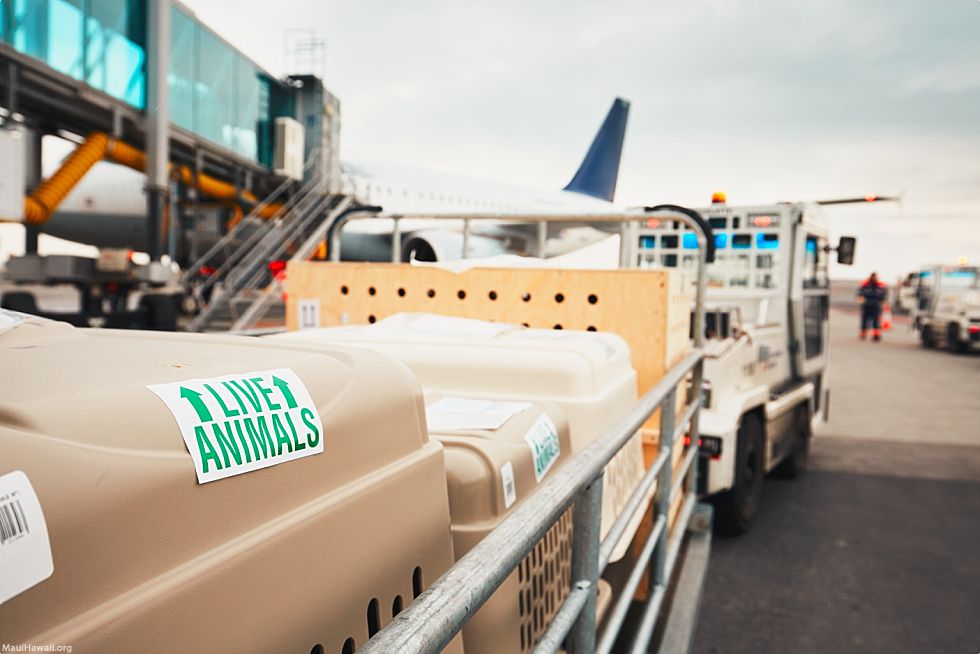
Conclusion
While the process of bringing your pet to Hawaiʻi may seem complicated, following these steps ensures a smooth entry with minimal stress. By completing the rabies vaccinations, FAVN test, and required forms and adhering to the airlineʻs requirements, your pet can enjoy a warm welcome to Hawaiʻi without lengthy quarantine stays. For more details and the latest information, and to get started on the process, check out the official Hawaiʻi Department of Agriculture page. For questions and concerns, the most effective way is to send an email to rabiesfree@hawaii.gov, as the Animal Quarantine Station (808-483-7151) is often overwhelmed with call volume.





